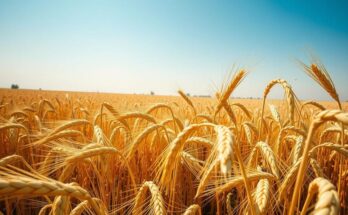Brazil’s economy grew 3.4 percent in 2024, fueled by a 4.8 percent increase in household spending. Although industry and services expanded, agriculture contracted by 3.2 percent. Exports rose 2.9 percent, while imports saw a significant increase of 14.7 percent. President Lula da Silva and Minister Simone Tebet acknowledged these developments, with growth predictions for 2025 set at 2.01 to 2.3 percent.
Brazil’s economy achieved a growth rate of 3.4 percent in 2024 compared to the previous year, as indicated by the Brazilian Institute of Geography and Statistics (IBGE). This growth was primarily fueled by a notable increase in household spending, which rose by 4.8 percent year-on-year. Additionally, the industrial sector experienced a growth of 3.3 percent, while services expanded by 3.7 percent.
Despite the overall positive economic performance, the agricultural sector faced challenges, contracting by 3.2 percent due to unfavorable harvest conditions. In terms of international trade, exports increased by 2.9 percent, while imports surged significantly by 14.7 percent, largely due to rising demands for chemicals, machinery, and motor vehicles.
President Luiz Inacio Lula da Silva expressed his optimism regarding the economic growth, characterizing 2025 as “the year of the harvest.” He noted on social media, “A growing GDP means more jobs and more money in the hands of Brazilians.” Minister of Planning and Budget Simone Tebet reported that the GDP per capita attained a figure of 55,247.45 reais (approximately 9,558.4 U.S. dollars), marking a 3.0 percent increase and underscoring the necessity to combat inflation to lower food prices.
Looking towards the future, financial markets forecast a growth of 2.01 percent for Brazil’s GDP in 2025, while government estimates are slightly more optimistic, projecting a 2.3 percent growth rate. This reflects ongoing efforts to maintain economic momentum and address existing challenges within various sectors of the economy.
In conclusion, Brazil’s economy exhibited considerable growth in 2024, primarily driven by increased household spending and contributions from industrial and service sectors. However, challenges within agriculture and rising imports indicate areas that require attention. The forecasts for 2025 suggest a continued focus on growth, with both government and market predictions showing promise for the upcoming year.
Original Source: english.news.cn




